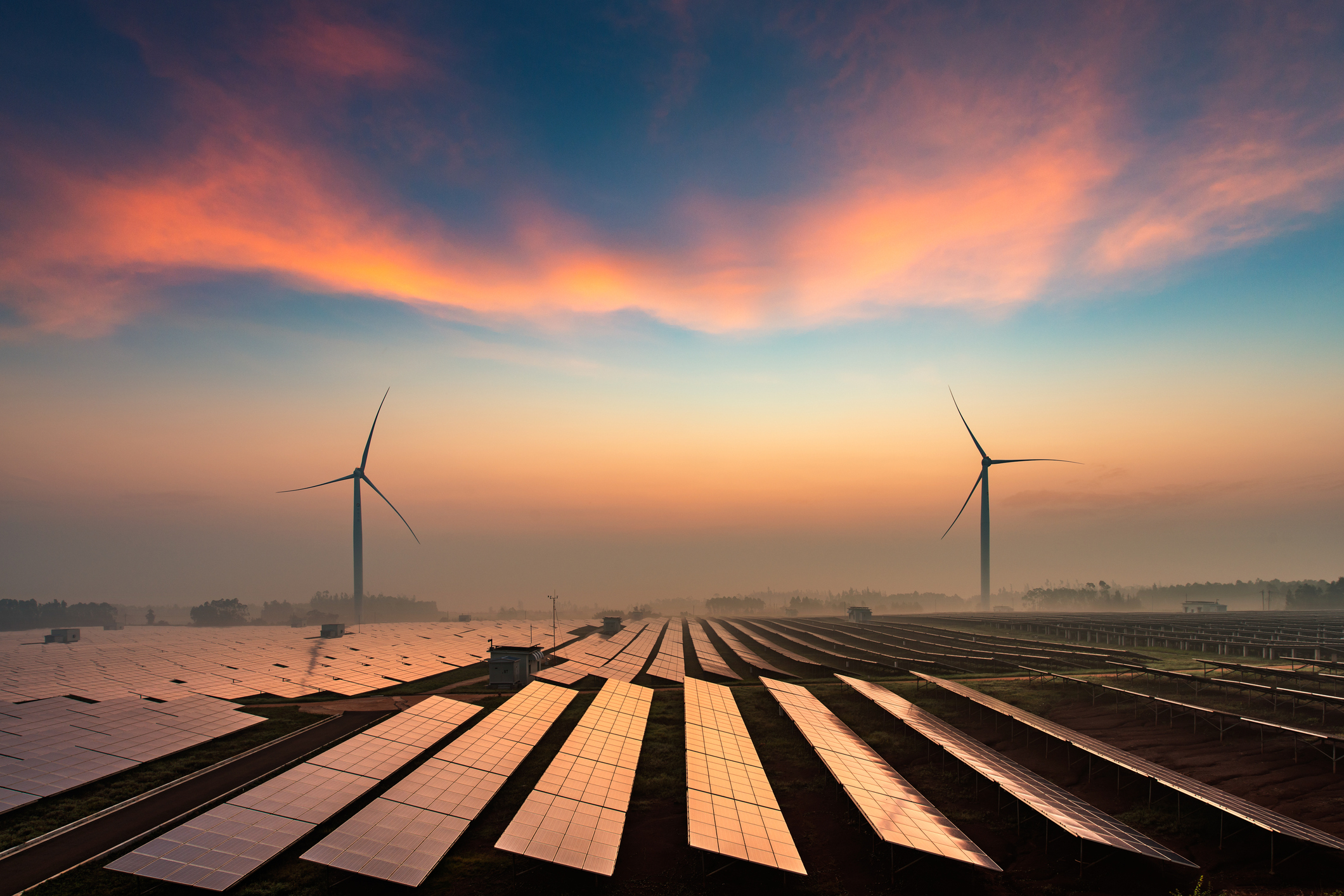The early-demise of Solyndra, a Silicon Valley startup that manufactured solar panels and collapsed in 2011, is still vivid in our collective consciousness. Solyndra not only let down big-name investors such as KPCB and Redpoint, but it also left taxpayers to shoulder the $535 million federal loan.
Follow Crunchbase News on Twitter & Facebook
On a certain level, cleantech startups resemble electric vehicle (EV) and gene therapy startups. Each group sports a long time horizon, capital intensiveness, and low margins, which can limit their appeal to investors.
Over the past five years, VCs have invested less in cleantech startups overall, and whatever capital they do disburse is increasingly focused on late-stage cleantech companies. The two trends matter as the lack of early-stage funding could kill the pipeline of cleantech innovation down the road.
The Cleantech Funding Environment
For this article, Crunchbase News defines cleantech, or clean technologies, as products and services that reduce negative environmental impacts through improving energy efficiency and sustainability.
Cleantech (our list of constituent companies can be found here) is known as a sector heavily backed by the federal government.
Under President Bush, energy bills passed in 2005 and 2007 gave cleantech companies loan guarantees and tax credits. In addition to issuing billions of loans to clean energy projects, President Obama successfully called on the private companies and investors to put in more than $4 billion to combat climate change through partnerships and investment funds.
Policymakers’ extensive involvement potentially contributed to the cleantech boom. In fact, when we charted the total funding amount and deal number of U.S. cleantech startups from 2000 and on. The result confirmed our hypothesis.
The chart below includes all the deals, from convertible debt, to crowdfunding, to your typical VC series. We will examine the overall funding environment first, and then delve into VC only deals, to walk you through the unique insights we’ve gathered.

2008 and 2010 stood out as the years when funding and deals that went into cleantech startups peaked. Favorable regulatory climate and rising gas prices made investors take a leap of faith in cleantech during those two years.
However, in 2011, around which the cleantech bubble burst, both deals and dollars started to decline. After 2015, investments in the sector began to recover, thanks to the bulk of debt financing, private equity, and post-IPO rounds. From 2015 and on, non-VC rounds make up 87 percent of the total funding amount. This could be attributed to a decline in VC funding or that alternative funds, such as debt financings and grants, offer more capital and flexibility.
Fluctuating VC Investments
To compare VC investments to the overall funding ecosystem illustrated in the previous section, we isolated VC money going into cleantech.

Before 2012, VC funding follows a pattern similar to that of the overall funding. 2008 and 2011 immediately caught our eyes as the years during which cleantech startups attracted the most VC dollars. Though VC fanaticism temporarily cooled in 2009 following the financial crisis, investments bounced back in 2010
Between 2007 and 2010, the period when federal subsidies for renewable energy skyrocketed from $5.1 billion to $14.7 billion per year, more early-stage VC rounds emerged. It seems likely that governmental support could have given the VC community confidence that cleantech could disrupt the energy sector.
However, after 2012, VC funding sharply declined and has not rebounded ever since. VC dollars continued to trickle into cleantech startups, but they came from mostly late-stage rounds, where commercialization is more foreseeable.
While VC faith in cleantech crumbled, other sources of capital, such as debt financing and post-IPO rounds, have stepped up, helping the overall funding recover by 53% from 2015 to 2017. The relative ease of getting alternative funding such as debt financings and federal grants could probably explain this discrepancy.
“In case of cleantech companies, a lot of hard assets exist like in terms of solar panels. You can get project-based financing or debt-based financing, all of these are tied to some kind of asset. So that’s why it’s easier for them to raise other types of financing,” Ashish Aggarwal, a Principal at Grishin Robotics, told Crunchbase News in an interview.
A Closer Look At Subsectors
While cleantech can be broken down into many categories, for the sake of simplicity and clarity, we decided to focus on the three most prominent subsectors in terms of activity and fundraising.
Solar
The solar category represents a $26 billion industry in the U.S., yet the market seems to favor service providers over companies hunting for technological breakthroughs.
Following Solyndra’s bankruptcy in 2011, several solar startups shut down one after another: Abound Solar in 2012, Nanosolar in 2013, Kior in 2014, and SunEdison in 2016. Almost all the failed examples were developers and manufacturers of solar cell technologies.
The solar businesses, which survived and continue to do well, avoided the risky and capital intensive R&D by focusing on commercial-scale installations. For example, Sunnova and SolarCity specialize in solar panel installation services. They not only raised the most out of all solar startups, but also topped all cleantech firms in our query.
Wind
According to the U.S. Department of Energy (DoE), wind generates about six percent of America’s electricity—compared to 34 percent natural gas, 30 percent coal, 20 percent nuclear, and one percent solar.
Most companies that develop wind energy also undertake other forms of renewable energy. Before it got acquired by NRG Yield in 2014, Terra-Gen Power, which focuses on geothermal, wind, and solar energy, funded itself all through a $1.2 billion debt financing round. Cape Wind, working on wind, biomass and solar energy projects, raised $1.2 billion through three rounds of debt financing over two years.
Startups that solely focus on wind energy are few but do exist. First Wind and Horizon Wind Energy develop, own, and operate wind farms, whereas United Wind leases out wind turbines on a small scale.
Transportation
Previously, we covered the U.S. EV landscape, focusing on electric car and truck manufacturers. This time, we took a look at auxiliary EV startups, which also struggle to sustain themselves. Better Place, which raised a total of $925 million before it went bankrupt in 2013, originally had the grand scheme of building a global battery-charging and switching network for electric cars. ECOtality, which received almost $100 million in federal grant, filed for bankruptcy the same year. However, ChargePoint, having raised $292.2 million to date, managed to survive and currently operates the world’s largest EV charging network.
Declining VC Funding May Slow Innovation
Over time, VCs are retreating from cleantech. And if they invest in any cleantech firms at all, they tend to participate in later rounds. The high-risk and low-return nature of cleantech startups could account for this phenomenon.
First, to commercialize advanced clean technologies, a lot of capital needs to be poured into developing products and building factories. Most startups already stumble at this barrier and VC money is not “patient capital.”
Second, even cleantech startups that succeeded in R&D and manufacturing flounder to generate revenue, especially with declining oil and gas prices and aggressive manufacturing rivals in China.
“There’s definitely a lack of VC funding in the current environment, and that can have a [negative] impact unless you are able to find alternate ways of bridging that gap,” said Aggarwal.
Sadly, not many VCs today believe in cleantech’s ability to both salvage the environment and turn a profit, as John Doerr and his followers did in 2007.
iStockPhoto /yangphoto

Stay up to date with recent funding rounds, acquisitions, and more with the Crunchbase Daily.


![Illustration of stopwatch - AI [Dom Guzman]](https://news.crunchbase.com/wp-content/uploads/Halftime-AI-1-470x352.jpg)








67.1K Followers